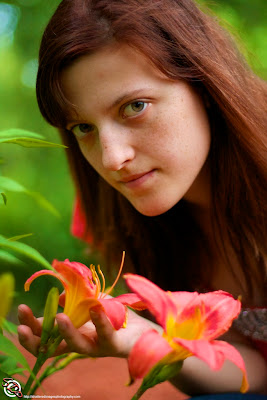
As you progress in your photography and are making the transition from shooting primarily with the auto settings to shooting much more in manual mode you will want to have some "go to" settings that you can use as a starting point for shooting in different situations. For example, I do quite a lot of flash photography. I know that ISO 200, f8, and 1/250th will work with flash. It may not give me the exact look I want, but I can be reasonably sure of getting something close to proper exposure with a flash that is firing with in a stop or two of its full output. Having this "go to" setting means I do not need to spend a lot of time calculating for exposure in this situation. I also know that I will be close to proper exposure in other similar lighting intensities, for example sun light. So these settings not only function for flash but any bright light situations.
So what does this "go to" setting do for me, what will it do for you? It is important to remember that most cameras are already full of "go to" settings, they will be called scenes, or something similar. However these are part of the auto settings and you have no creative control over them. If you use a scene that is listed for flash photography you are very likely to get settings like those, or even identical to those, I listed above. Which begs the question, why not just use the scene?
To answer this lets look at what the settings are doing. ISO 200 is a very slow ISO, this combined with the fastest shutter speed that will sync with the flash will effectively crush any but the brightest ambient light. The aperture of f8 provides a fairly broad Depth of Field meaning that a large portion of the frame will be in focus. This setting is very likely to provide a properly exposed if somewhat boring composition for a photo in any flash situation. The settings listed above will work just as effectively for flash photography in a party or for flash photography outside on a moonless night. However those are completely different situations to be shooting in.
On a moonless night there will not be enough ambient light to mix with the flash for creating the image. The "go to" settings listed above will work the same in this situation as they would in a party because they rely entirely on the flash for exposure. The ambient light of a party is crushed by the settings making its effective influence in the finished photo the same as the ambient light of a moonless night. Understanding this, I can then decide how much I want to shift away from the go to settings in a given situation.
A creative example would be to get a photo of your friend on a moonless night with the ambient light exposing the background. If I use the flash to expose the subject, and the shutter to expose for the background I can get a sharp clean image of my friend even though I will be using a long exposure to expose the background. The only setting I need to change is the shutter, to something like 30 seconds. Then I will want to use a tripod or otherwise brace the camera. This will allow the photo to expose but my friend does not need to stay perfectly still for the exposure because the were exposed properly by the flash. The flash fixes the image of my friend while allowing the background to then be exposed by the long shutter.
So now lets take this concept a step further. Instead of a moonless night lets assume a 3/4 moon, this exposure will still be well below the goto settings for flash. Proper exposure for the background may require something like 15 seconds with the ISO and aperture listed above. The moonlight will cast directional shadows on that landscape. With a detached flash balanced with gels to match the color of the moonlight it is then possible to create the illusion that a photo taken in partial moonlight. If the flash is positioned so that the shadowing on the subject is in the same direction as the shadows thrown by the moon it will look like the photo was taken only with moonlight.
By understanding the camera settings and how they interact I am able to create a single image by combining to sets of "go to" settings. The first, ISO 200, f8, 1/250th (flash) with ISO 200, f8, 15 seconds (low light) are combined in a single exposure. This works because the high intensity of the flash acts as an effective shutter speed of something like 1/1000th (depending on the flash unit) and does so in all situations. This is why the long exposure of the second setting does not interfere with the fast shutter of the first. By understanding which combinations work in different shooting conditions I can then use my creativity to combine these combinations much more creatively then the auto settings allow.
Follow Us
Website
YouTube
.jpg)
